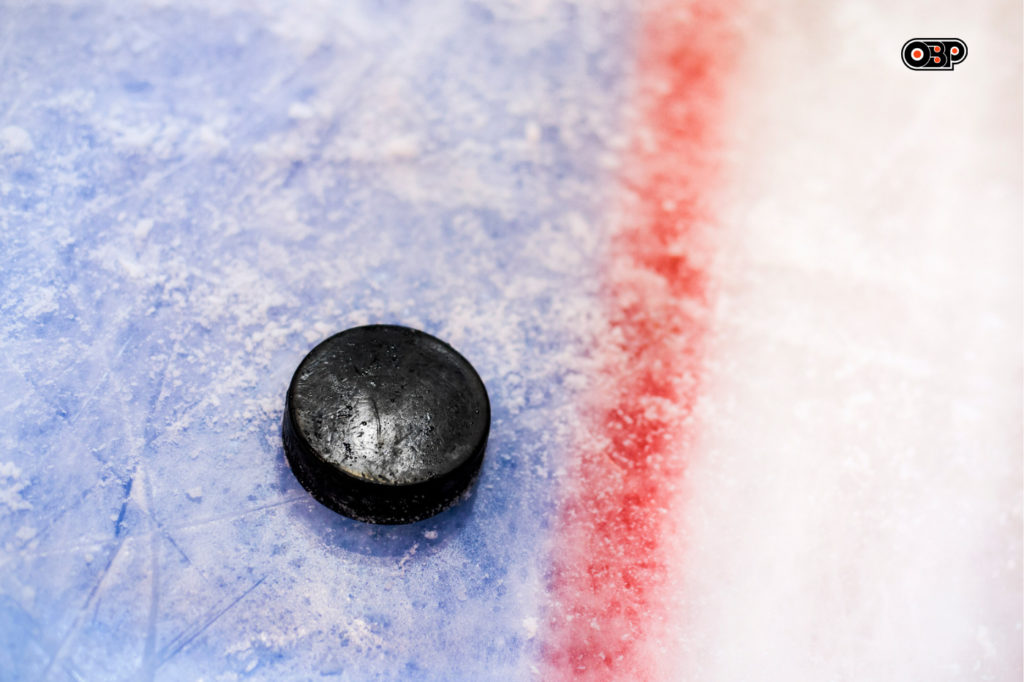
Table of Contents
ToggleDoes the thickness of ice on a hockey rink ever cross your mind when watching a captivating game?
Well, surprisingly, the standard thickness is between ¾ inch to one and a half inches.
This blog serves as an insightful guide into how this seemingly minor detail plays a huge role in creating the perfect game-play conditions!
The NHL sets specific standards for ice thickness in a hockey rink, typically between ¾ of an inch to one and a half inches.
The National Hockey League (NHL) has specific regulations for the thickness of ice in a hockey rink to ensure consistent gameplay across all matches. A typical NHL rink is 200 feet by 85 feet and features ice that is usually kept at approximately three-quarters of an inch or about 0.75″ thick.
This thin layer enables faster game play, making each contest more exciting for both players and fans alike.
The rinks are created using a meticulous layering technique, with smaller fractions of an inch added until the desired 0.75″ thickness is achieved through advanced refrigeration systems pumping up to 10,000 gallons of freezing brine water every minute beneath the surface.

Creating the perfect ice surface for a hockey rink involves a meticulous layering process and advanced refrigeration techniques.

The Zamboni is a crucial cog in the wheel of ice hockey, ensuring optimal game play on rinks worldwide. This machine’s primary purpose is ice resurfacing – it adeptly shaves the top layer to maintain just the right thickness for fast-paced matches.
Using a precision blade, it smooths out any rough or uneven patches that could potentially hinder skating performance or compromise player safety. Once shaving concludes, hot water gets dispensed over the refined surface, creating a level and smooth playing field ready for action.
But this machine doesn’t stop at mere smoothing – another vital aspect of its role lies in marking up the arena for accurate game play. It paints face-off circles, blue lines and goal crease onto the ice with striking precision thanks to specialized brushes that deliver crisp lines without fail.
The combination of paint and water assures markings stay put under rigorous gameplay conditions and won’t rub off easily.
Navigating such duties demands skillful operators who maneuver this monster with both care and preciseness preserving ice surface integrity while keeping prime conditions throughout periods or during breaks in games.
Read about: Free Agents in NHL

Various factors can influence the thickness of ice in a hockey rink, including temperature and environmental conditions as well as rink usage and traffic.
The temperature and environmental conditions play a crucial role in determining the thickness of the ice on a hockey rink. To maintain the ideal ice surface, the temperature inside the rink is kept at around 16 degrees Fahrenheit to prevent melting.
This controlled environment allows for optimal freezing rates, creating a harder ice surface that is faster to play on. Thicker ice would require more water and slower freezing rates, resulting in a softer surface that would not provide the same fast-paced game conditions desired in hockey.
By carefully controlling these factors, viewers can enjoy an icy playing field that enhances their skating performance and gameplay experience.
The thickness of the ice in a hockey rink can be affected by various factors, including rink usage and traffic. The more people that use the rink and skate on the ice, the more wear and tear it experiences.
This can lead to uneven surfaces and potentially thinner spots in certain areas. Additionally, frequent use of the Zamboni machine to resurface the ice can also affect its overall thickness.
It’s important for rinks to carefully monitor and maintain the ice thickness to ensure a safe playing surface for hockey players.

Ice thickness plays a crucial role in hockey, as it affects both player safety and game play performance.
Owing to the temperatures of the ice and the rick, its important for people to know what to wear to the game. And be prepared for the game day accordingly.
Safety is a top priority in hockey, and the thickness of the ice plays a crucial role in ensuring a safe playing environment. Ice on the hockey rink needs to be thick enough to withstand the impact of players without cracking or breaking.
However, it shouldn’t be too thick either, as that would slow down the game and affect player performance. With an ideal thickness of about 0.75 inches, the ice provides a sturdy surface for players while allowing them to maneuver and stop quickly.
This ensures that players can play at their best while minimizing the risk of injury.
The thickness of the ice in a hockey rink has a significant impact on the game play and skating performance. Thinner ice allows for faster gameplay and quicker skating, as players can glide effortlessly across the surface.
This translates to a higher speed of gameplay, making the sport even more exciting to watch. On the other hand, if the ice is too thick, it would slow down both players and the puck, affecting the overall pace of the game.
The optimal thickness strikes a balance between providing a sturdy surface that can withstand player impact while still allowing for fast and fluid movement on skates.
Maintaining the proper thickness is crucial for player safety and optimal game play.
By following NHL standards and carefully layering the ice, hockey arenas ensure a solid surface that allows players to showcase their skills on the ice.
Share:
OrangeandBlackPack.com is a participant in the Amazon Services LLC Associates Program, an affiliate advertising program designed to provide a means for sites to earn advertising fees by advertising and linking to awin, amazon.com and affiliated websites. Amazon, the Amazon logo, AmazonSupply, and the AmazonSupply logo are trademarks of Amazon.com, Inc. or its affiliates.
Address: 2430 N 20th St, Philadelphia, PA 19132, USA
© 2024 Orange and Black Pack